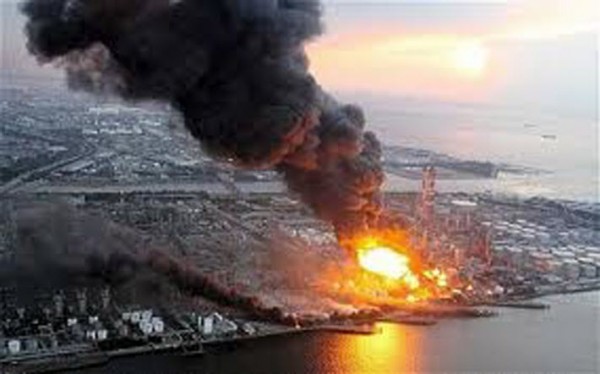Echo of Fukushima reaches the US

Photo: EPA
The Fukushima NPP continues to disturb the general public even almost three years after the accident. New leaks of radioactive water beyond the protective dam took place recently due to heavy rain. People give less and less credence to nuclear experts’ assurances that the sea was not polluted.
Meanwhile, the US newspaper The Cape Cod Times reports that toxic leakage from the NPP is approaching the US west coast. Seventy sailors from the USS Ronald Reagan that took part in the rescue operation after the accident are going to sue Tepco, the Fukushima NPP operator. The sailors claim that the company did not warn them about all risks that the crew could face.
The aircraft carrier spent a month in the offing at the distance of ten miles from the NPP in a spot of radioactive fallout. The crew desalinated overboard water and drank it and used it for cooking, which caused cases of cancer and even blindness.
Oceanic pollution within 10 miles around the NPP is understandable. The main part of nuclear disintegration products got into the water and not into the air like in Chernobyl. Ocean currents carry harmful substances far away. Even in other parts of the world fish and seafood drawn from contaminated streams can be dangerous for humans, Maxim Shingarkin, Deputy Chairman of the State Duma Committee for Natural Resources says.
“Currents in the World Ocean are so structured that the areas of seafood capture near the US north-west coast are more likely to contain radioactive nuclides than even the Sea of Okhotsk which is much closer to Japan. These products are the main danger for mankind because they can find their way to people’s tables on a massive scale.”
Contaminated fish can swim anywhere, so fishing is not absolutely safe in any region of the world any more. It is impossible to test the entire catch for pollution, just as it is impossible to introduce a universal ban on fishing. The Japanese government has just partially banned fishing in the most dangerous areas. Vladimir Slivyak, Co-chairman of the Ecodefence international ecology group is speaking.
“The Russian governmentplanned to restrict fishing in the Far East. As far as I know, no such restrictions have been introduced so far. Still it is possible that some steps will be taken.”
As for atmospheric pollution, radio nuclides from Fukushima reached California and Mexico 8 days after theaccident. Russia was not affected, Maxim Shingarkin says.
“Air emissions were not projected either on the Sea of Okhotsk, or Sakhalin, or the Far East, or the Kuril Islands. So airlifting cargoes does not seem dangerous so far. I mean so far because not all the nuclear fuel has been taken out of the power generation units. This means that radioactive emissions into the atmosphere are possible as a result of heating.”
It took years after Chernobyl to make detailed conclusions about the scale of nuclear pollution. We are having a similar situation with Fukushima, Vladimir Slivyak believes.
“We’ll probably know the consequences of this accident in 10-15 years. It is clear that a large amount of fish, sea weeds and everything the ocean contains has been polluted. It is clear that pollution spreads all over Earth. It is clear that vast territories have been polluted in Japan itself. All this is generally clear. But we need research to provide more details and this will take a long time.”
Meanwhile, even now every blue-finned tuna fish drawn near the Californian coast has signs of radioactive pollution. This information is provided by one of the research portals (globalresearchreport.com). Most likely, polluted water approached those parts because the level of radioactive iodine in brown algae has risen over 200-fold. The level of caesium-137 has risen all along the US west coast. Caesium-137 has been found in local berries and mushrooms. Local residents often report the deaths of birds. Radioactive nuclides have even reached the shores of Alaska where the population of the sock-eye salmon has dropped dramatically. Some experts believe that we can expect more consequences of the accident at the Japanese NPP.

